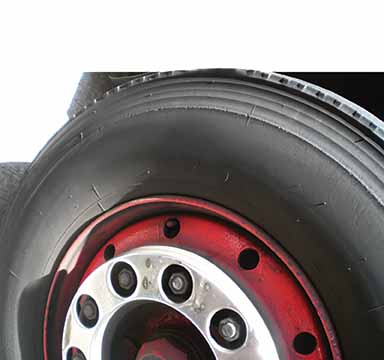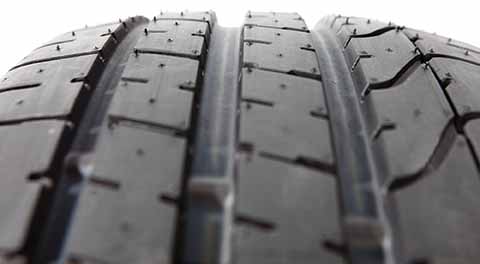The way CV tyres are perceived is drastically changing.
Story by:
Shrinivas Dharmadhikari
Clocking an annual revenue of close to Rs.50,000 crores, and contributing three per cent to the country’s GDP, the Indian tyre industry is going through a silent revolution. The way CV tyres are perceived is drastically changing. It is influencing 39 tyre manufacturers in the fray at almost every level. A capital intensive activity that is also technology intensive, the change in perception is akin to a silent revolution. Never before has something like this touched the lives and times of some seven to eight manufacturers that account for 85 to 95 per cent of the CV tyre market. Accounting for 75 per cent of the total industry revenue, the perception of operators and users towards CV tyres is changing quite substantially. It is changing on the basis of load and running. If these two make life challenging for CV tyres when compared to a two-wheeler, three-wheeler and passenger vehicle tyres, the shift to CV radials is taking place in search of superior fuel efficiency.
Rising radialisation
Responding to the change in perception and the search for tyres that will offer superior fuel efficiency, CV tyre manufacturers are embracing new manufacturing processes and formulations through an increased portion of ‘silica’, less carbon black content and higher dimensional tolerances. A recent survey by Metric Global revealed that the rising demand for CV radials is in search for higher fuel efficiency. Involving 1012 trucks at 12 different locations across the vast country, the survey found out that the use of radial tyres led to fuel savings in the region of 8 to 10 per cent on long-haul journeys. Despite this, the speed of radialisation in CVs is much slower than it was in passenger vehicles. Referred to as Truck and Bus Radials (TBRs), the penetration of CV radials was 17 per cent in FY2011-12. In 2018, it is 38 per cent. Radialisation, the sample survey indicated, is at its lowest in Intermediate Commercial Vehicles (ICVs) at 10 per cent. It has reached the highest level of 59 per cent in tractor-trailers. High in Tata and Ashok Leyland CVs, and perhaps due to their parc size, it is the long-haul and heavy-load operators that are preferring radials over bias-ply tyres, the sample survey results seem to point at.
The brand presence and brand share
As per the findings of the sample survey, close to 90 per cent of the aftermarket fitments are from four main brands Apollo Tyres, MRF Tyres, JK Tyre and Ceat Tyres. Apollo and MRF are leading the race. The two command two-thirds of the market. Apollo Tyres, the survey revealed, is a clear leader of the two in TBRs. In comparison to an earlier survey carried out by Metric Global on CV tyres, Birla Tyres showed a considerable gain in market share. Bridgestone and Continental also showed a rise in market share by four per cent. The strategy of Bridgestone and Continental to create a premium product category on the basis of the global reputation they enjoy, and on the basis of better quality at a higher price point seems to gain ground. Bridgestone, the survey showed, is gaining ground faster than one would anticipate.
In the case of bias-ply tyres, the survey revealed that the brand share of Apollo, MRF, JK and Ceat is more or less identical. Apollo and MRF lead the race whereas Ceat, JK Tyre, Birla and Continental are gaining market share. As far as tyres are concerned, the survey indicated that Apollo’s Amar Gold tyre is the most selling at 26 per cent. The next most selling tyre is MRF’s SuperMiller 99 HCL at 19 per cent. It is followed by Ceat’s Super HL at 17 per cent. At the (tyre) model level, out of the top ten players, it is the traditional four, which are dominating. If the challenger brands like Birla, Bridgestone and Continental are beginning to make a mark, Birla is enjoying an edge on account of its two bias-ply tyre models. They, the sample survey showed, amounted to 12 per cent. Revealing the domination of Apollo, MRF and JK Tyre across a range of vehicle GVW as far as TBRs go, the sample survey, in the case of bias-ply tyres, indicated that Apollo, MRF and Ceat are leading in market share. JK Tyre was found to have a significant presence in the lower GVW range. In TBRs, the sample survey found Apollo to be leading in the higher GVW range. JK Tyre was found to be leading in ICVs, and in the lower GVW range.
Opportunities and challenges
Pointing at some startling trends in the CV tyre market, the sample survey carried out by Metric Global revealed that traditional manufacturers dominate the CV replacement tyre market. These include Apollo, Ceat and JK Tyre. New players like Birla, Bridgestone and Continental are gaining ground, but have some distance to go as yet. CV tyre buyers, the sample survey indicated, are beginning to accept new players. This marks a big change. The development also reflects a significant change in perception. It also points at how CV operators are open to experimenting in their quest to achieve lower TCO. The sample survey indicated that a change in perception is taking place at a rapid pace. This could have to do in part due to the rising fuel prices, changes influenced by GST, and the changing infrastructure.
As per the survey, the CV tyre market is expanding at a good speed. Trends, the survey revealed, is indicative of good growth at the higher GVW end of the market as well as the lower GVW end of the market. Considering the way the hub and spoke arrangement is maturing, fundamental changes in the CV tyre space are in the making. It would be interesting at this point in time to look at the US tyre market. It has five major brands. The European market, at the other end, has eight brands. Each brand has a sizeable market share whereas the three major brands in Europe are enjoying more than 60 per cent of the market share. It will be interesting to watch if the Indian CV tyre market will go the US way or the Europe way. As of now, it is safe to say that significant changes are visiting the Indian CV tyre market.
————————————–
Shrinivas Dharmadhikari is a Senior Consultant, Metric Global. The views expressed by the author are his personal opinions and do not necessarily reflect the view of the CV magazine.























